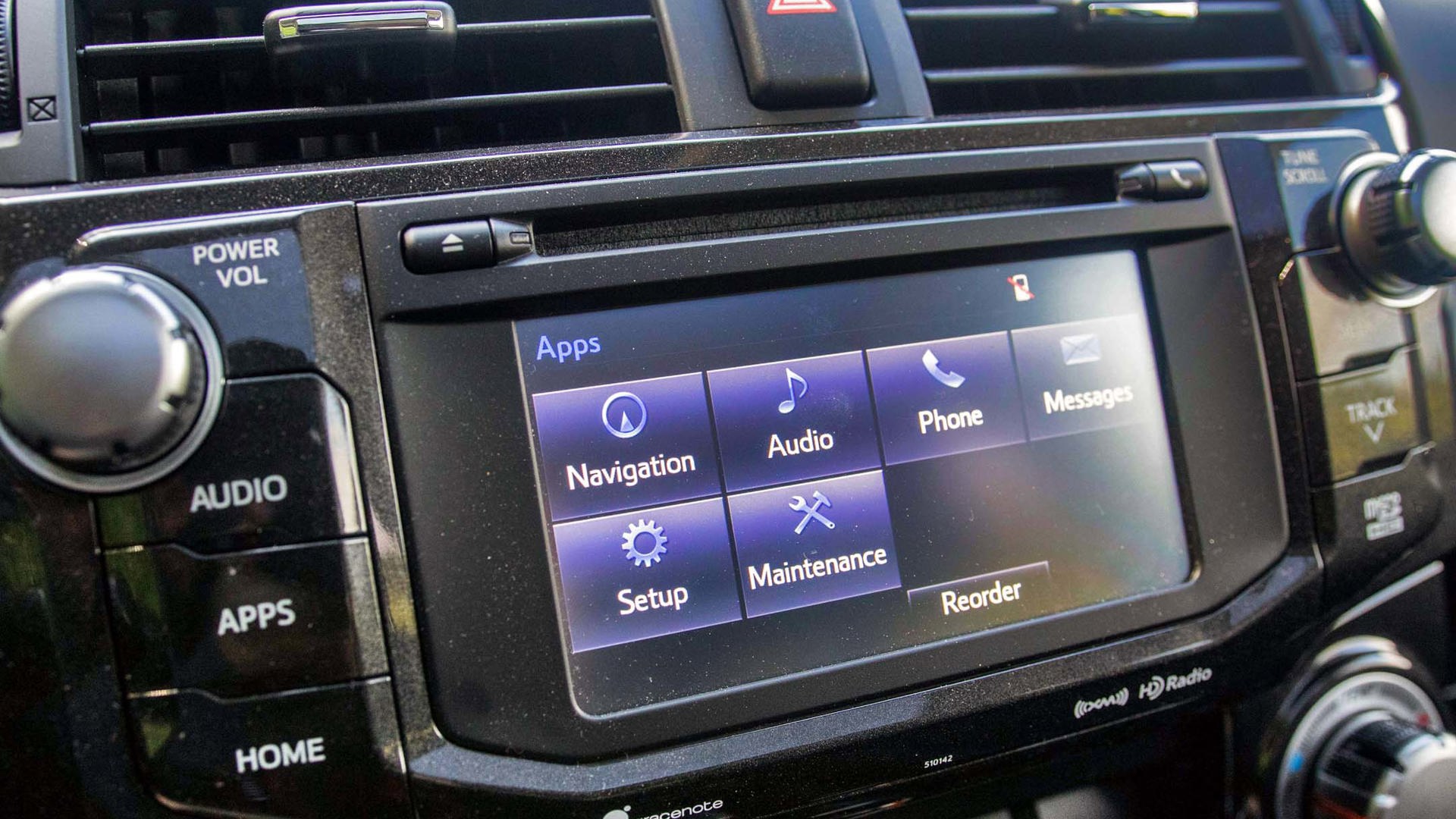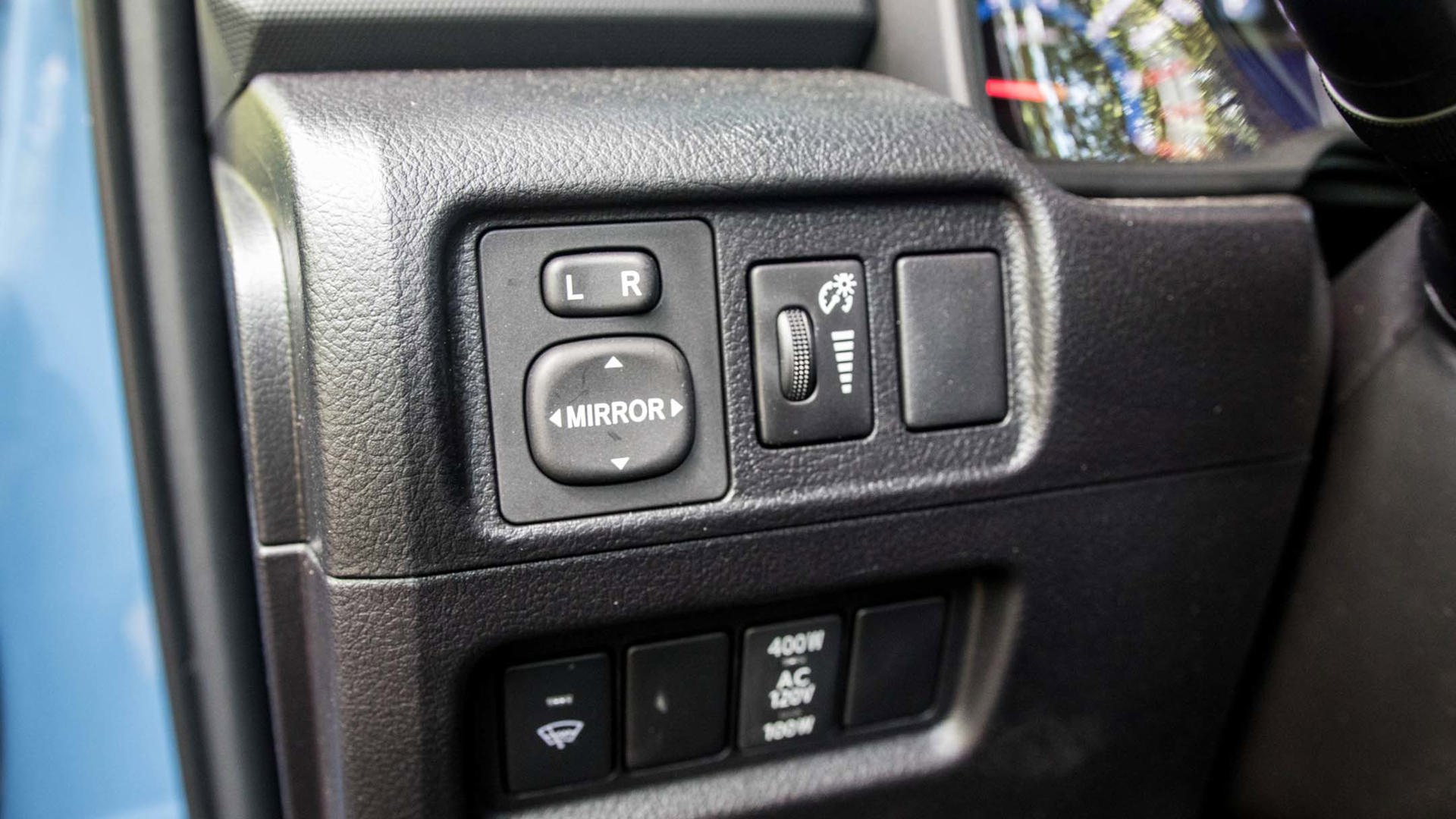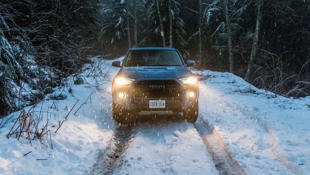 AutoTrader SCORE
AutoTrader SCORE
-
STYLING6/10
-
Safety6/10
-
PRACTICALITY8/10
-
USER-FRIENDLINESS7/10
-
FEATURES7/10
-
POWER5/10
-
COMFORT7/10
-
DRIVING FEEL6/10
-
FUEL ECONOMY5/10
-
VALUE8/10
The race belongs not only to the swift, but also to those who can go the distance. For Canada’s Gary Robbins, a race-winning ultra-runner who holds course records from Hawaii to Colorado to BC, there was really only one choice of vehicle. I mean, it even has “Runner” in the actual name.
“I heard a guy on the sidewalk yelling to his girlfriend, ‘Hey! What about that?’”
While he’s already well-known in circles of people with scabby shins and missing toenails, Robbins’ name might still be ringing a bell for the rest of us couch potatoes. Last year, he came just shy of finishing the Barkley Marathons; held in Tennessee, it’s a sadistic blend of orienteering and death march, held over approximately 200 km of mud and brambles. Made infamous by a recent Netflix documentary, the Barkleys are probably the most gruelling trail race out there. Since 1986, fifteen people have finished. Nobody finished this year.
With a day job coaching other ultra-runners and managing a successful local trail-racing series, his own tight training schedule to run, and a young son to raise, Robbins is about eighty-four-times more active and lifestyle-y than yours truly. Thus, I got him behind the wheel for a better look at Toyota’s most dirt-friendly active lifestyle vehicle, the 2018 4Runner TRD Pro.
Not inexpensive, but head-turning
“I read somewhere that the third owner is the one who finally takes these off-road,” says Robbins with a maritimer’s twang, “After all, it’s a sixty thousand dollar truck.”
Well there’s the elephant in the room right out of the starting gates. This TRD Pro variant of the 4Runner is indeed sixty large after taxes and levies. The base 4Runner begins at a not-inconsiderable $45,650, and all that rock-crawling TRD stuff adds nearly $7,500 to the price tag.
So, perhaps you’re better off buying a used one, no? Well, maybe not. The 4Runner has an unusual ace in the hole when it comes to value considerations, but let’s leave that until later, and look at Big Blue here on its merits.
From a styling perspective, well, it’s blue. Really, really blue. The only real colours available on the regular 4Runner is red or a deep blue, and with the TRD Pro the choices are either Cavalry Blue or looking like the black and white backdrop to that Take on Me video.
The limited palette is a bit of a shame now that the FJ Cruiser is defunct, as Toyota off-roaders ought to have a little more joy to them. Still, call in the Cavalry if you’d like to get a little attention. Robbins reports that the 4Runner had heads swivelling.
“I heard a guy on the sidewalk yelling to his girlfriend, ‘Hey! What about that?’”
Equipped with black 17-inch wheels and beefy sidewalls, this Toyota has a little whiff of Tonka going on, and it’s wonderful. A new, old-fashioned grille treatment is nearly the only real update in recent memory, and when parked next to Robbins’ daily driver – a 2005 model he just picked up – there’s about as much difference as there is between Liam Hemsworth and Chris Hemsworth.
Still, there’s a burly handsomeness here that hasn’t gone out of style, so why mess with it? It’s really more the interior that looks heavily dated, with a heavy reliance on hard plastic and knobs that could be operated while wearing a catcher’s mitt. Robbins pops open the rear to show that the jack is the same unit you get in both his ’05 and in a friend’s 1998 4Runner.
Just as Mercedes-Benz daren’t tweak the recipe of the G-wagen, the modern 4Runner is an example of Toyota not messing with what the fans want. And it’s not like there haven’t been any updates: while the lack of a rear power liftgate still raises eyebrows on such an expensive SUV, the rear hatch at least has better balance. It’s easier to close than that of the decade-older 4Runner next to it.
Interior dated, but comfortable
Comfort levels are pretty good. Being essentially a box on wheels, the 4Runner has the practical and unpretentious layout of a Land Rover Defender. It’s just that none of the bits break off in your hands. The controls are straightforward and bulky, with the TRD shifter ludicrously sized. It looks like a ham-hock skewered on a steel chopstick.
Robbins notes that the touchscreen controls are a little on the small side, and not particularly modern. Indeed, the system seems a little sluggish, but it’s fairly intuitive. Because the design of the dash is so old, the aftermarket might have a universal solution.
Other than showing its age, the TRD Pro is rugged enough to put up with heavy outdoor use and also (much more destructive) small children. The power rear window glass makes utilizing all the cargo space that much easier, although the rear luggage cover doesn’t cover the entire area. Robbins’ older model has clips to attach to the rear headrests; the newer model lacks them.
Apart from that irritating cost-cutting measure, Toyota’s philosophy with the 4Runner seems to be: don’t mess with what already sells. The company pours R&D dollars into the RAV4 and Highlander, as both of those must compete against rivals that are continuously advancing, but the 4Runner’s only real competition is, arguably, the Wrangler Unlimited. Nissan might bring the Xterra back at some point, but for now the 4Runner is pretty much the only made-in-Japan true SUV on the market.
All about the experience
As such, potential buyers are expected to put up with a little throwback behaviour. The 4Runner’s 4.0L V6 and five-speed automatic transmission are considerably thirstier than the upgraded 3.5L and six-speed you now get in a Tacoma, and it’s not like you’re exchanging fuel for speed. While absolutely flooring the 4Runner will make it gallop up to highway velocities without too much trouble, the 4.0L requires some pretty firm prodding to wake it up.
Everything else about the on-tarmac driving dynamics is just as you’d expect looking at those balloon-sized sidewalls. The 4Runner pitches and wallows far more than anyone raised with crossover “car-like handling” expectations. The brakes are adequate, but not more than adequate. You will not be dicing up traffic in this thing.
As a cruiser, however, it’s not uncomfortable. Once the driver gets used to the 4Runner’s old-fashioned squishy predictability, you start to like it. It’s still hard to see your way to paying that whopping price tag, but there’s an honest likeability here.
Consider the Mercedes-Benz G-wagen, and how people seem to be intent on paying through the nose for them. Further, consider the Land Rover Defender, and that truck’s cult following. When they stopped production of the Defender, dealers in the UK started stockpiling them.
As with sportscars, a proper SUV isn’t always about pushing things to the limit, but about the feeling of potential. There are a lot of PDK-equipped Porsche 911s out there that never see track use, but people just like the feeling of power.
“They’re selling an experience,” says Robbins.
You couldn’t put it plainer than that. The TRD Pro 4Runner is a big, sloppy, competent galoot, and bouncing around town in it gives you basically the same feeling as all those Jeep drivers. While it’s true that most early owners won’t take the thing off-road much, the potential is there.
It’s like being suited up in cargo shorts, hiking shoes, and a technical all-weather jacket, and then going to the grocery store. You look like Bear Grylls, but you can stock up on ice tea instead of, y’know, having to drink your own urine.
However, in the interests of experimentation, your author did a bit of light dirty work in the 4Runner, both earlier in the year in snow, and in warmer temperatures. In truth, the terrain selection system, and true manually selectable four-wheel drive were all overkill for most situations. When equipped with chains and snow tires, the 4Runner will throw a bow-wave of powdery snow, and you can park it on a boulder if you wish.
Only perhaps the Ford Raptor represents more excessive off-road capacity that’s unlikely to get used. However, part of that physical capability brings us to one of the best reasons to buy a 4Runner.
Ultra-marathon value retention
The poor fuel economy is going to be a problem, especially if you live in Vancouver as I do, and have pipeline issues sucking cash directly out of your wallet. However, the major ownership expense for most new car purchases is still depreciation, and 4Runners basically don’t.
Robbins’ recently acquired 2005 model showed up on a local lot with around 100,000 km on the odometer, and it was essentially a foot-race to see which buyer could get there first. He originally bought an older Xterra because used 4Runner prices were so high, and it took him a couple of months of dedicated searching to find this one.
A great deal on a 4Runner that’s just a couple of years old? Forget it. These things command such a premium in the used market that you might as well just buy a new one and ask top dollar when it comes to sell it. As the TRD Pro package includes a host of mechanical upgrades over the standard 4Runner, it’ll likely hold its value as if it was a large lump of precious metal.
The 4Runner enjoys a reputation for reliability. While it’s a bit of a throwback in the driving experience, at least you aren’t isolated from the road; like other boxy true SUVs, it turns even regular day-tripping into something of a safari. The fuel economy is bad, but the resale is nearly unmatched.
In short, it’s an ideal machine to take on any terrain the landscape throws at you, when you want to bring your whole family along. This 4Runner TRD Pro might not present many new ideas, but it holds itself to an old standard that still carries weight. It’ll go the distance.
| Engine Displacement | 4.0L |
|---|---|
| Engine Cylinders | V6 |
| Peak Horsepower | 270 hp @ 5,600 rpm |
| Peak Torque | 278 lb-ft @ 4,400 rpm |
| Fuel Economy | 14.3/12.0/13.3 L/100 km city/hwy/cmb |
| Cargo Space | 255 / 2,540 L seats down |
| Model Tested | 2018 Toyota 4Runner TRD Pro |
| Base Price | $45,650 |
| A/C Tax | $100 |
| Destination Fee | $1,815 |
| Price as Tested | $55,045 |
|
Optional Equipment
$7,480 – TRD Pro Package (multi-terrain select, rear differential lock, low-speed crawling control, Bilstein shocks, 17" black TRD wheels, 31.5" Nitto all-terrain tires, front skidplate) $7,480
|
|














































